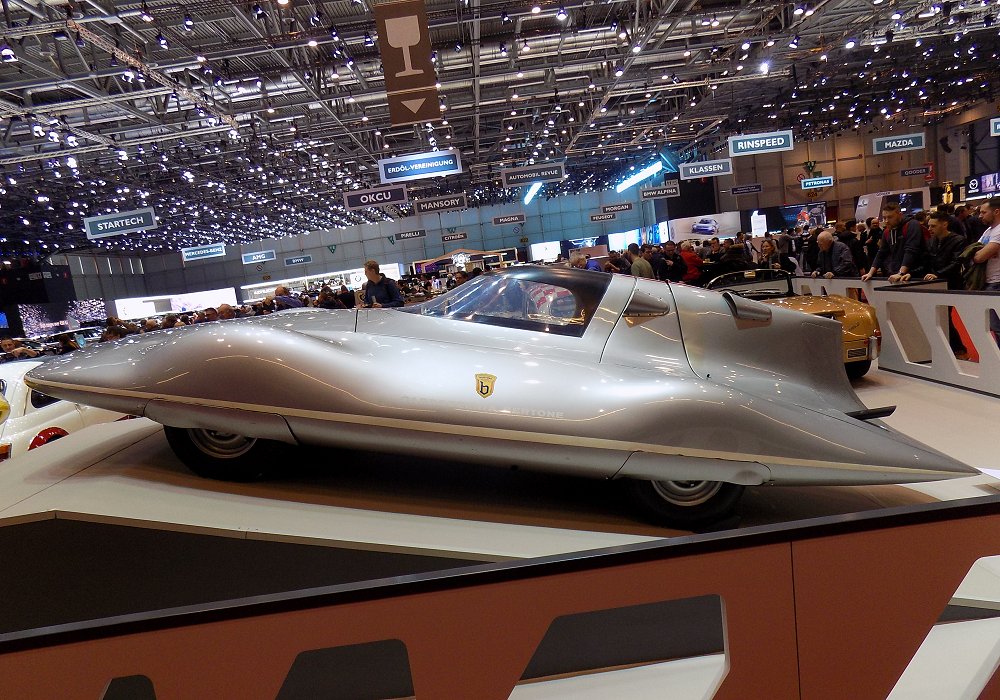Few cars embody the perfect marriage of speed and design quite like the 1956 Abarth Fiat 750 Record Bertone. This remarkable machine emerged during Italy’s golden age of automotive innovation, when boundaries between art and engineering disappeared. Born from the collaboration between Carlo Abarth’s racing expertise and Bertone’s design mastery, this aluminum-bodied speedster redefined what small-displacement racing cars could achieve.
The 750 Record Bertone stands as more than just another pretty face in Italy’s rich automotive history. This rare gem — with its Franco Scaglione-designed bodywork and highly modified Fiat running gear — dominated speed records at Monza, maintaining an average pace of 165 km/h for an astounding 72 hours straight. Such feats helped cement both Abarth and Bertone’s reputations in the automotive world.
Fact!
The Abarth 750 Record Bertone held 15 world records simultaneously in 1956, marking it as one of the most successful record-breaking cars of its era.
Design Revolution: When Bertone Met Abarth
The story begins in Turin, where Carlo Abarth’s vision for a record-breaking machine found its perfect canvas in Bertone’s workshop. Franco Scaglione, fresh from his Alfa Romeo BAT car successes, approached the 750’s design with scientific precision. Each curve and contour of the aluminum body served a purpose, minimizing drag while maximizing stability at high speeds.
This harmonious blend of form and function debuted at the 1956 Turin Auto Show, where its streamlined silhouette left audiences speechless. The car’s low-slung profile, with its distinctive nose and tapered tail, broke away from contemporary design conventions while establishing new standards for aerodynamic efficiency.
Historical Reference!
The car's aluminum body was hand-crafted using traditional Italian coachbuilding techniques, with each panel being carefully shaped over wooden bucks — a process that took over 1,200 hours per vehicle.
The interior matched the exterior’s purposeful design, featuring a minimalist cockpit focused entirely on the task of high-speed record attempts. Every gauge, switch, and control was positioned for optimal functionality during extended high-speed runs.
Engineering Mastery Under the Hood
At the heart of this speed machine beats a thoroughly reworked Fiat 600 engine. Through careful modification and tuning, Abarth’s engineers transformed the humble 743cc powerplant into a high-revving marvel capable of producing 75 horsepower — nearly triple the output of its donor engine.
Key engineering achievements include:
- custom-designed aluminum cylinder head;
- high-compression pistons crafted from lightweight alloys;
- twin Weber carburetors with specialized intake manifolds;
- performance-tuned exhaust system;
- reinforced crankshaft and connecting rods.
“Examining the engine today, you can see the incredible attention to detail in every component. It’s a masterclass in extracting maximum performance from minimal displacement.” — Richard Bennett, Classic Italian Car Specialist
The modifications extended beyond the engine bay. The chassis received extensive reinforcement, while the suspension was completely revised to handle the increased performance demands. A close-ratio gearbox ensured optimal power delivery throughout the speed range.
Record-Breaking Legacy
The true measure of any performance car lies in its achievements, and the 750 Record Bertone boasts an impressive resume. During its record-breaking run at Monza in 1956, this diminutive powerhouse shattered 15 world records, maintaining speeds that seemed impossible for a car of its size.
Important!
The car's 72-hour endurance run at Monza, maintaining an average speed of 165 km/h, remained unbeaten in its class for over a decade.
These accomplishments propelled Abarth into the spotlight, demonstrating that innovative engineering could overcome the limitations of engine size. The car’s success story spans 11 years, from 1956 to 1966, during which it continued setting and breaking records across various distance and time categories.
Cultural Impact and Present-Day Significance
Today, the Abarth Fiat 750 Record Bertone stands as more than just a successful record-breaker. It represents a pivotal moment in automotive history when Italian design and engineering excellence combined to create something truly extraordinary. Its influence extends beyond its competitive achievements, inspiring generations of sports car designers and engineers.
The car’s significance grows with each passing year, as it embodies the golden age of Italian coachbuilding and motorsport innovation. Surviving examples command exceptional attention at prestigious concours events and automotive museums worldwide, where they continue to captivate audiences with their unique blend of beauty and performance.
The Legacy Lives On
Looking back, the 750 Record Bertone’s impact on automotive history becomes clearer with time. It proved that lightweight construction, aerodynamic efficiency, and meticulous engineering could overcome the limitations of engine displacement — a lesson that remains relevant in today’s automotive landscape.
The principles embodied in this remarkable machine — the pursuit of efficiency through design, the importance of aerodynamics, and the value of precision engineering — continue to influence modern sports car development.
| Pros | Cons |
|---|---|
| Revolutionary aerodynamic design that set new standards | Extremely rare, making parts nearly impossible to find |
| Impressive power-to-weight ratio for its era | High maintenance requirements due to specialized components |
| Record-breaking performance capabilities | Limited practicality as a road-going vehicle |
| Historical significance in automotive development | Expensive to restore due to aluminum body construction |
| Pioneering use of lightweight materials | Requires expert knowledge for proper maintenance |
| Exceptional build quality and craftsmanship | High acquisition costs due to rarity and collectibility |
| Strong investment potential | Limited documentation available for restoration |

